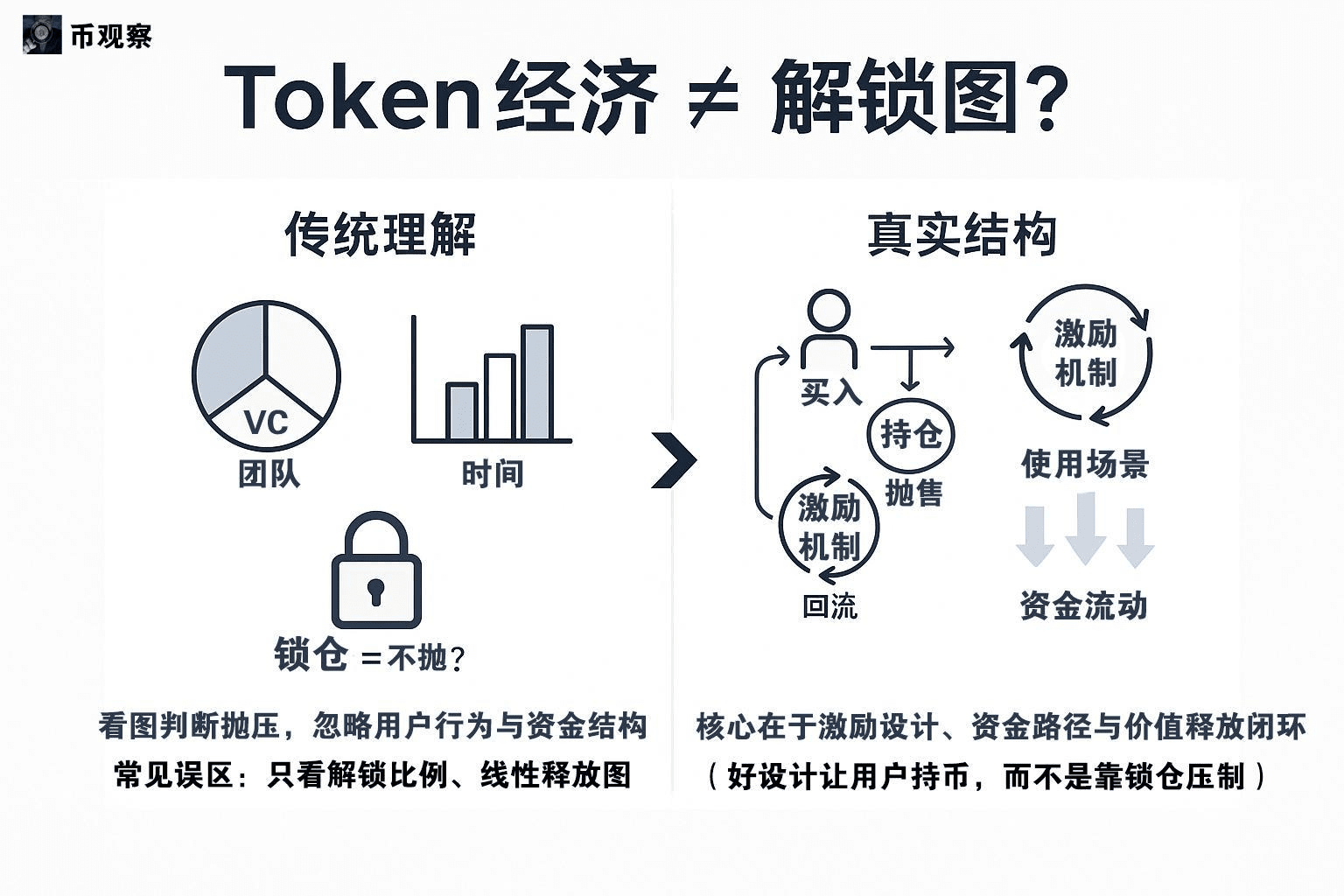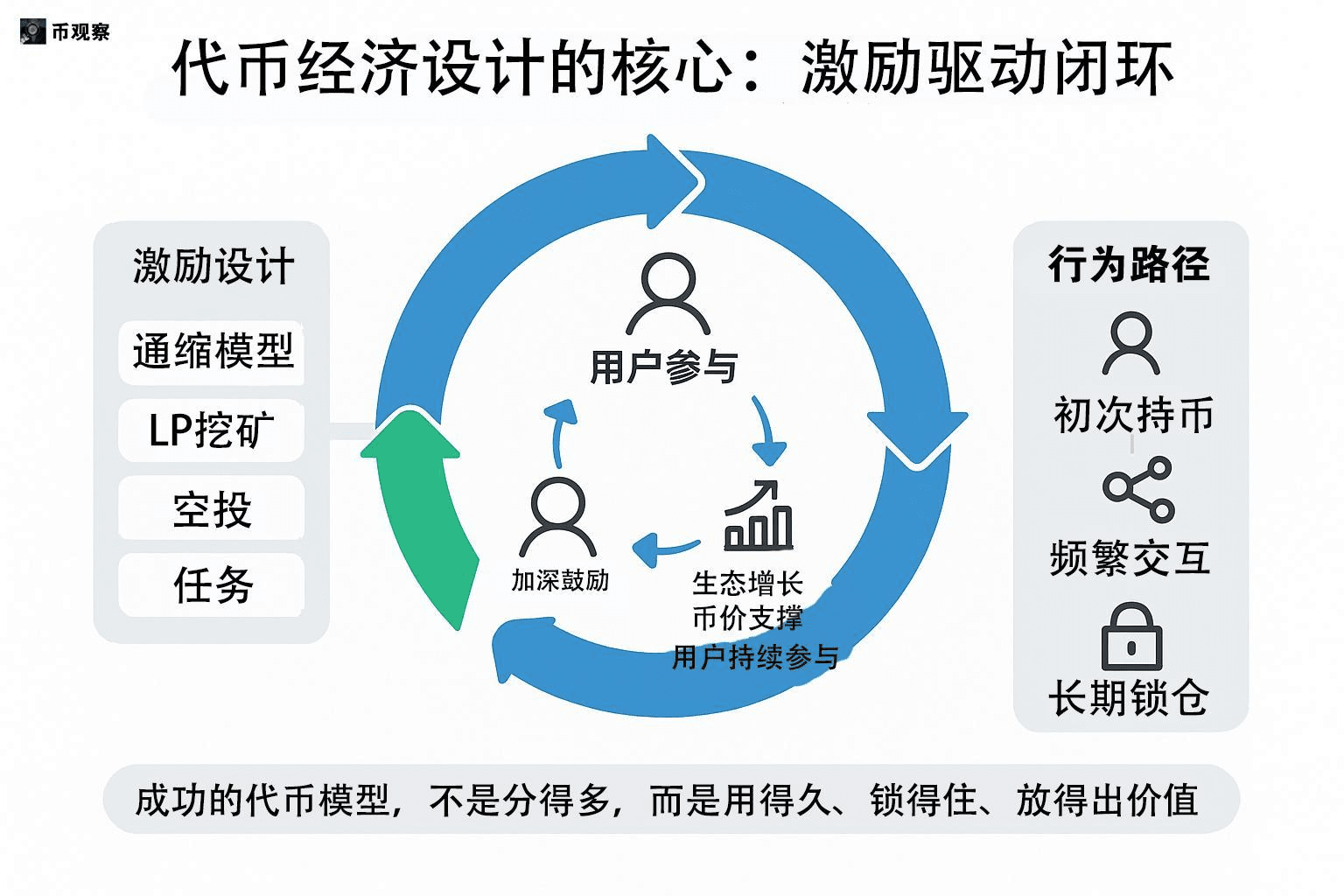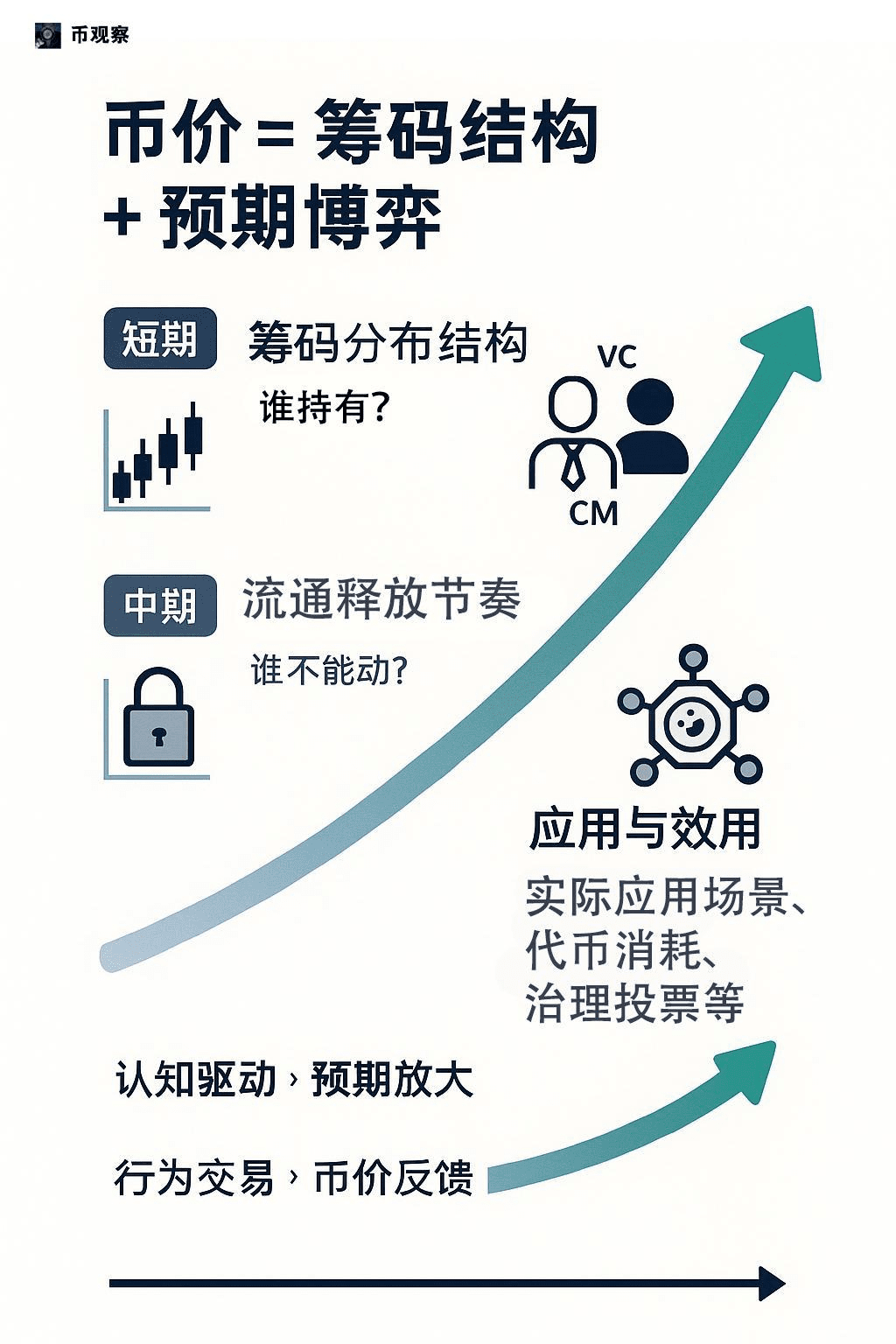🚀 Coin Observation · Hotspot Science Series
Those who have been in the crypto space for a long time may default to a formula:
Tokenomics = Unlocking Chart + Allocation Ratio + FDV.
But the reality is that this is just the surface framework; what truly determines a token's life or death are the design details written 'outside the chart': incentive mechanisms, circulation structure, price support points, utility binding methods, user behavior paths.
Today, let’s seriously discuss: what exactly does true token economic model design entail?
1. Unlocking Chart ≠ Real Circulation Structure
Many people treat the token unlocking chart as the only standard for value judgment, but the reality is:
Unlocking ≠ Circulation
Even if the project side unlocks it, they can choose not to sell or circulate; this part does not create actual selling pressure.
Not unlocked ≠ No impact
Many projects link market incentives to unallocated expected shares; this kind of 'future inflation' has long been reflected in the price.
VC/Team Allocation ≠ Actual Selling
Experienced projects never 'release all at once', but instead gradually 'soft land' through market making, liquidity subsidies, and KOL rewards.
Therefore: understanding the unlocking chart is just the starting point; understanding the release path and operation methods is the key.

2. The allocation structure is just a static diagram, while the economic model is a dynamic game.
We often see a project stating:
'Community occupies 50%, team occupies 20%, investors occupy 15%...'
But this is just a cake-sharing diagram; what truly determines fate is—how to eat this cake, when to eat it, and whether it can grow bigger after eating?
The key question is:
Can the incentive mechanism drive positive behavior?
Is it just about taking the rewards and leaving, or encouraging holding, reinvesting, and participating in governance?
Is the utility scenario linked to the price?
Without a 'token demand closed loop', even a high community allocation ratio is just 'dividing up air'.
Is there an anti-inflation mechanism in place?
Deflation design is not just about destruction, but about guiding users through mechanisms of 'locking assets + paying + recycling'.
The conclusion is: the issue is not about 'how much to give to whom', but about 'designing a system that continuously incentivizes value contributors'.

3. Behind the price, it's not about supply and demand, but about expectation games.
The ultimate test of Tokenomics is: can it withstand the liquidity cycle of the market?
Many people say price = supply and demand, but the supply and demand in Web3 is cognitive supply and demand, not physical goods.
Short-term price depends on who sells first.
Mid-term price depends on who can lock in funds.
Long-term price depends on who can create sustained value scenarios.
To build a healthy model, one must focus on:
User side: motivate everyone to buy and hold, not just to take and leave.
Funding side: ensure market makers and the secondary market have enough reasons to come in and stay long-term.
Ecological side: allow token usage to create a self-reinforcing cycle, rather than relying on advertising to survive.
A truly powerful economic model does not fear people selling, but rather discourages them from selling.

4. Core of Token Economic Design: Three-Level Binding
In summary, the true design of Tokenomics is three-level binding:
Binding the token to its use case: making users unable to do without this token.
Binding the token to the growth mechanism: the faster the growth, the more resilient the token price.
Binding the token to the belief structure: using institutions to create a 'sense of value recognition', making long-termism the mainstream culture.
Many successful project models appear simple on the surface, but behind them is a deep structure of behavioral psychology, game theory, and incentive design.

5. Coin Observation · Musings
In every bull market in the crypto space, there emerges a group of 'economic model masters', holding a colorful unlocking chart and speaking eloquently.
But projects that truly carve out a closed-loop model of 'user behavior + capital flow + narrative propagation' in the underlying details are rare.
Next time someone asks you: 'How good is this coin's economic model?'
Don't just throw out an unlocking table; understanding 'behavioral motivations and institutional structures' is what makes one truly knowledgeable in Tokenomics.
Strong recovery, assets doubled! Follow the rain, layout in advance, easily achieve big gains.
Continuously pay attention to: ATM KNC.



